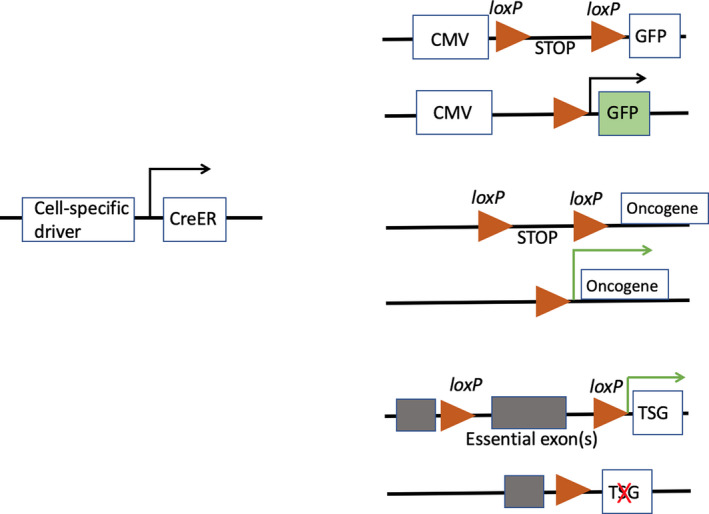Figure 5.

A, For lineage labelling, a stable transcriptional driver such as the cytomegalovirus (CMV) or ROSA26 promoter is engineered upstream of the reporter gene, and a loxP flanked stop signal (loxP‐STOP‐loxP [LSL]) is placed between these two sequences. In the presence of Cre, recombination of the loxP sites removes the LSL sequence to allow expression of the reporter gene. Crucially, Cre expression can be induced by a cell‐specific transcriptional driver (eg for albumin if labelling hepatocytes, see Figure 10), and temporal control is achieved by the use of a CreER fusion gene whereby Cre is fused with a mutant ligand‐binding domain of the oestrogen receptor that can only be activated by deliberate exposure to a synthetic ligand such as tamoxifen (CreERT2). Thus, in animals, translocation of CreER to the nucleus only occurs after tamoxifen injection where it induces recombination of the DNA at loxP sites. B,C, A similar strategy can be employed to excise the stop cassette preceding a mutant oncogene or essential exons in a tumour suppressor gene (TSG). This will lead to activation of the oncogenic program in the selected cell lineage
